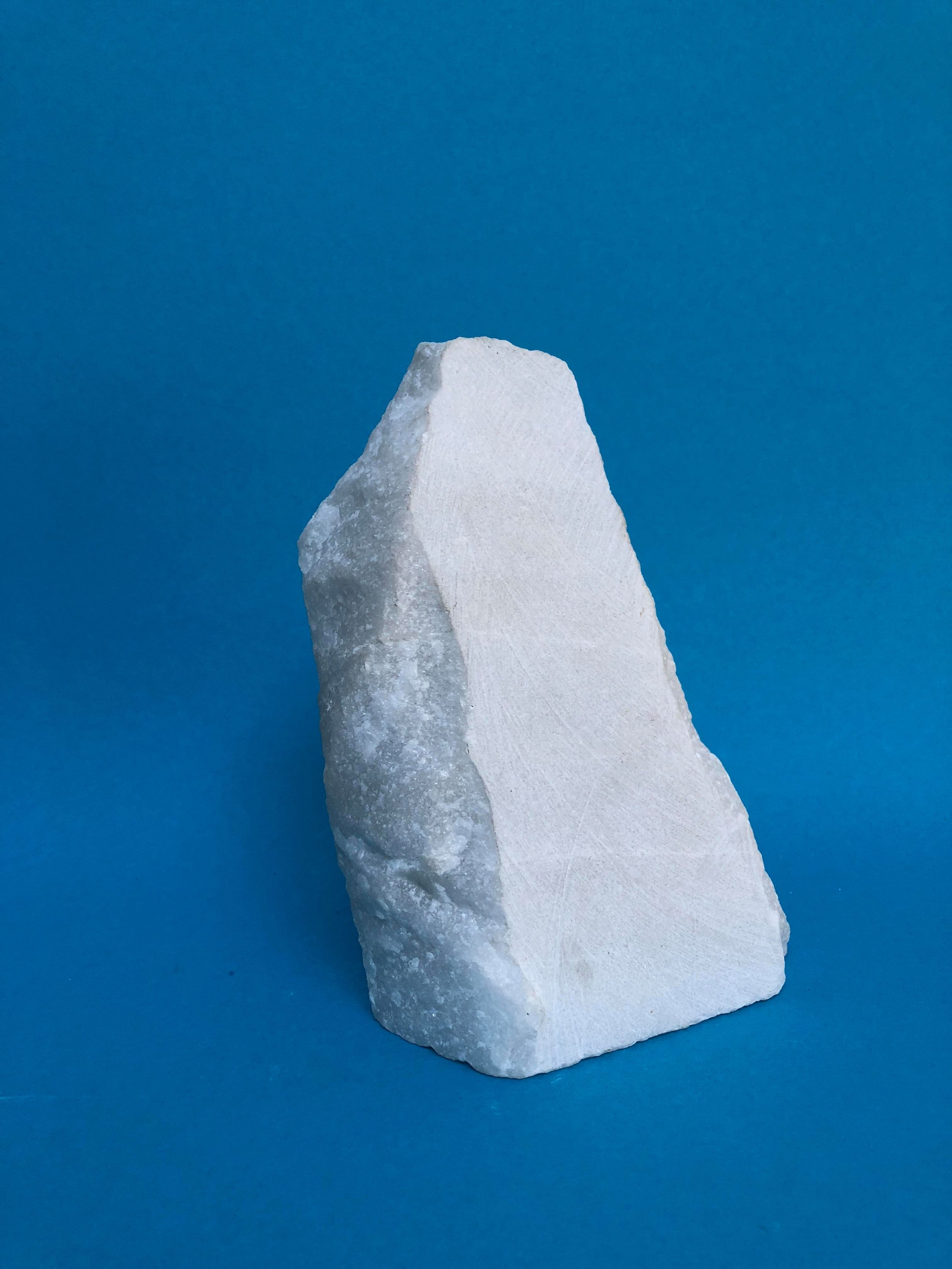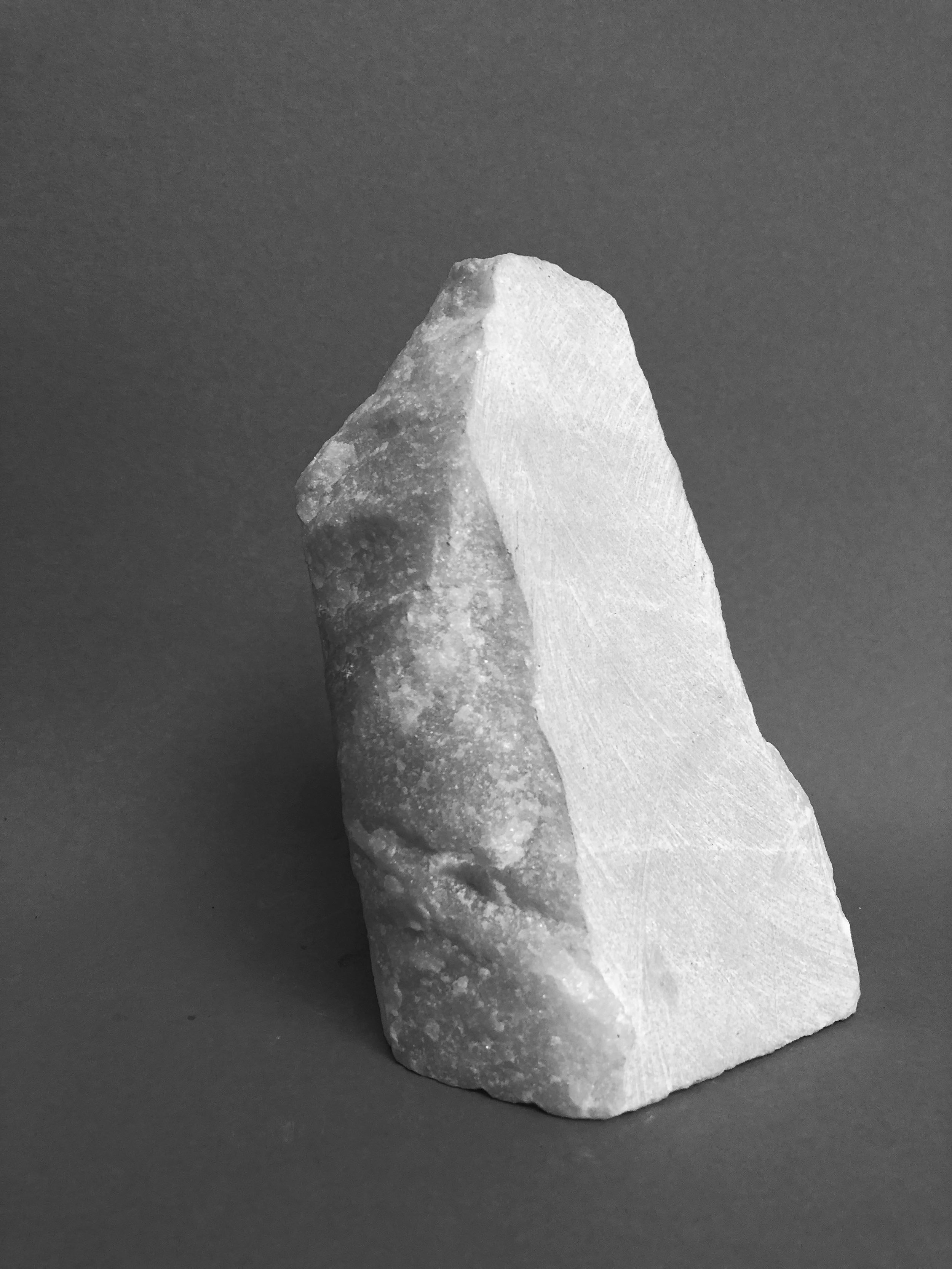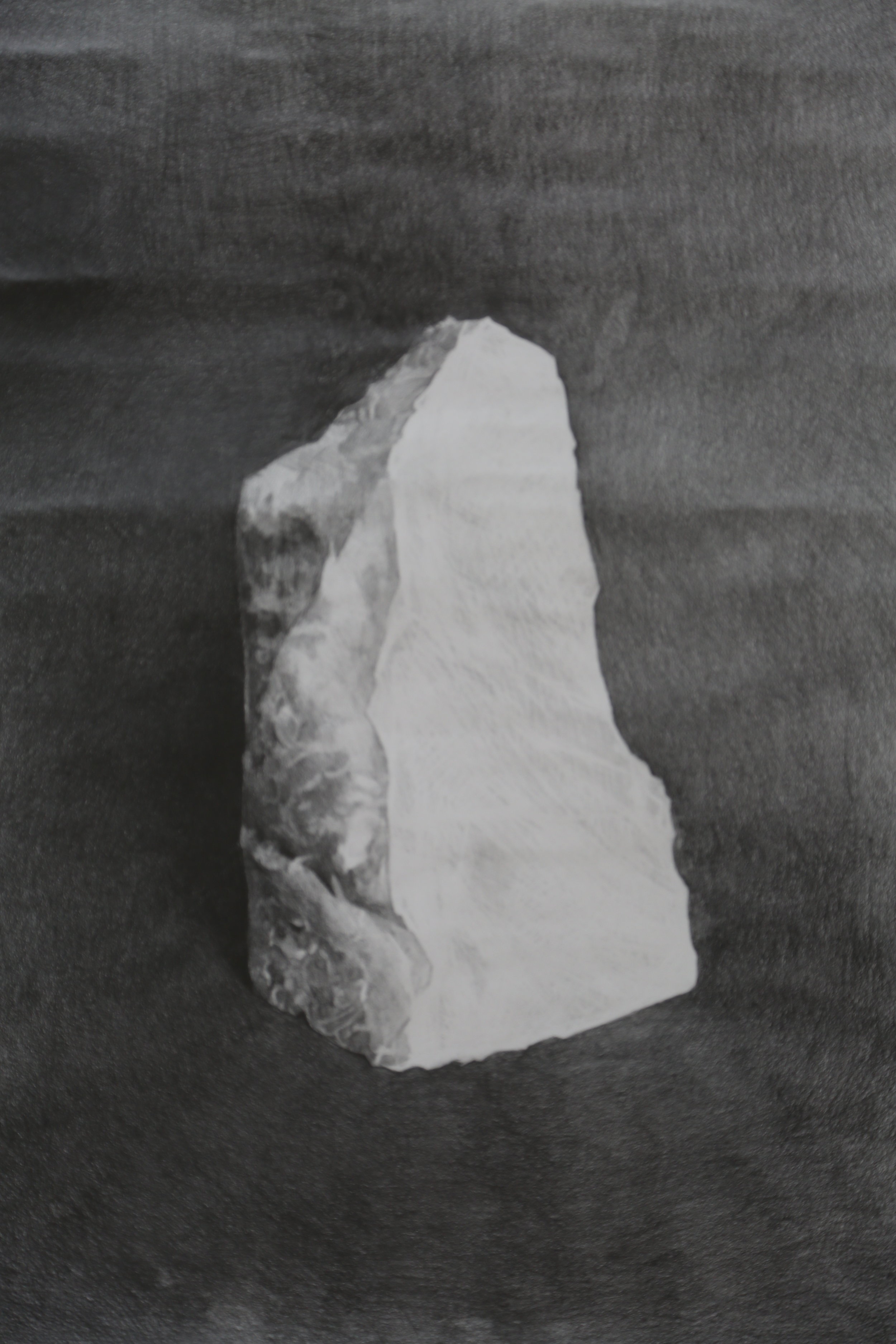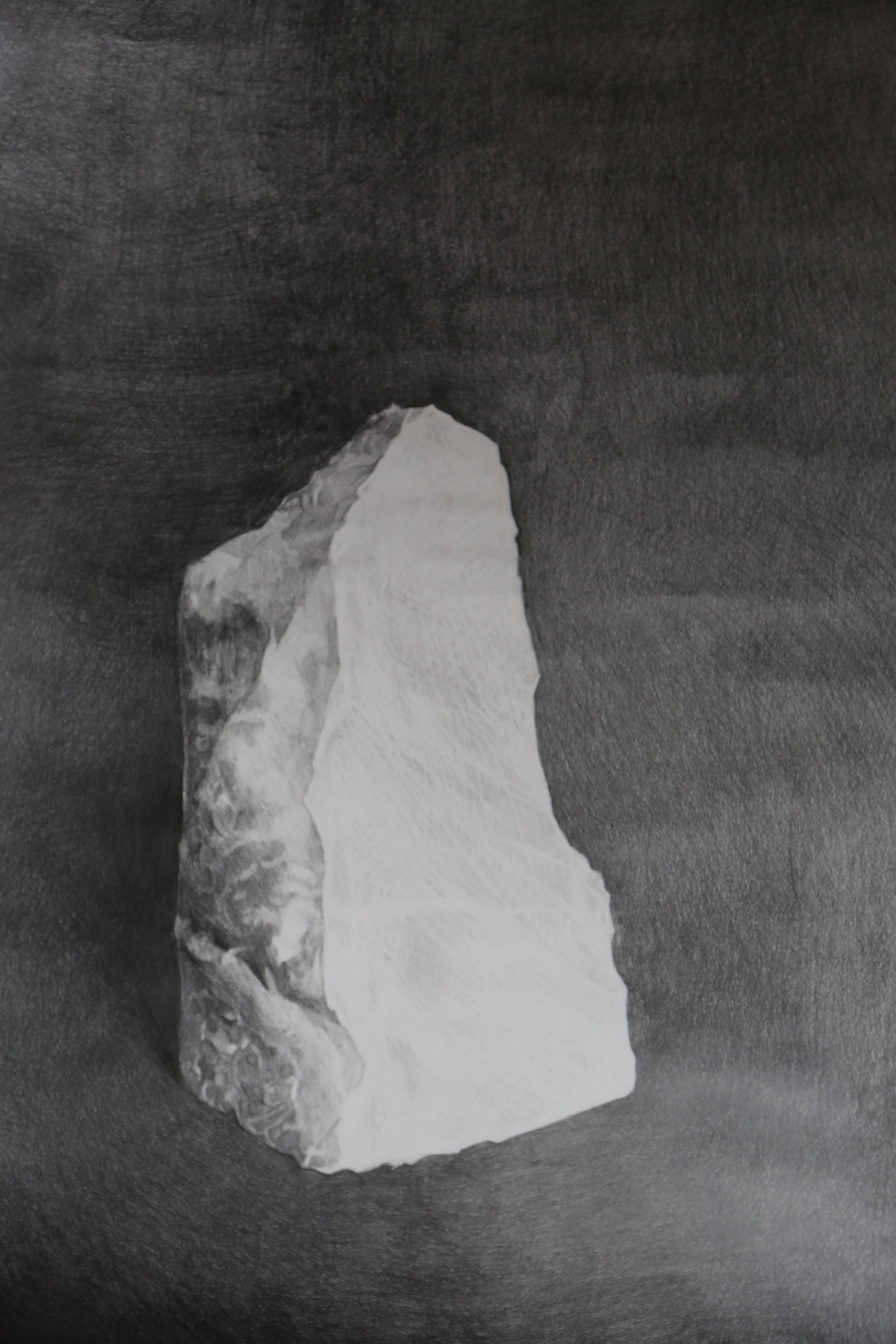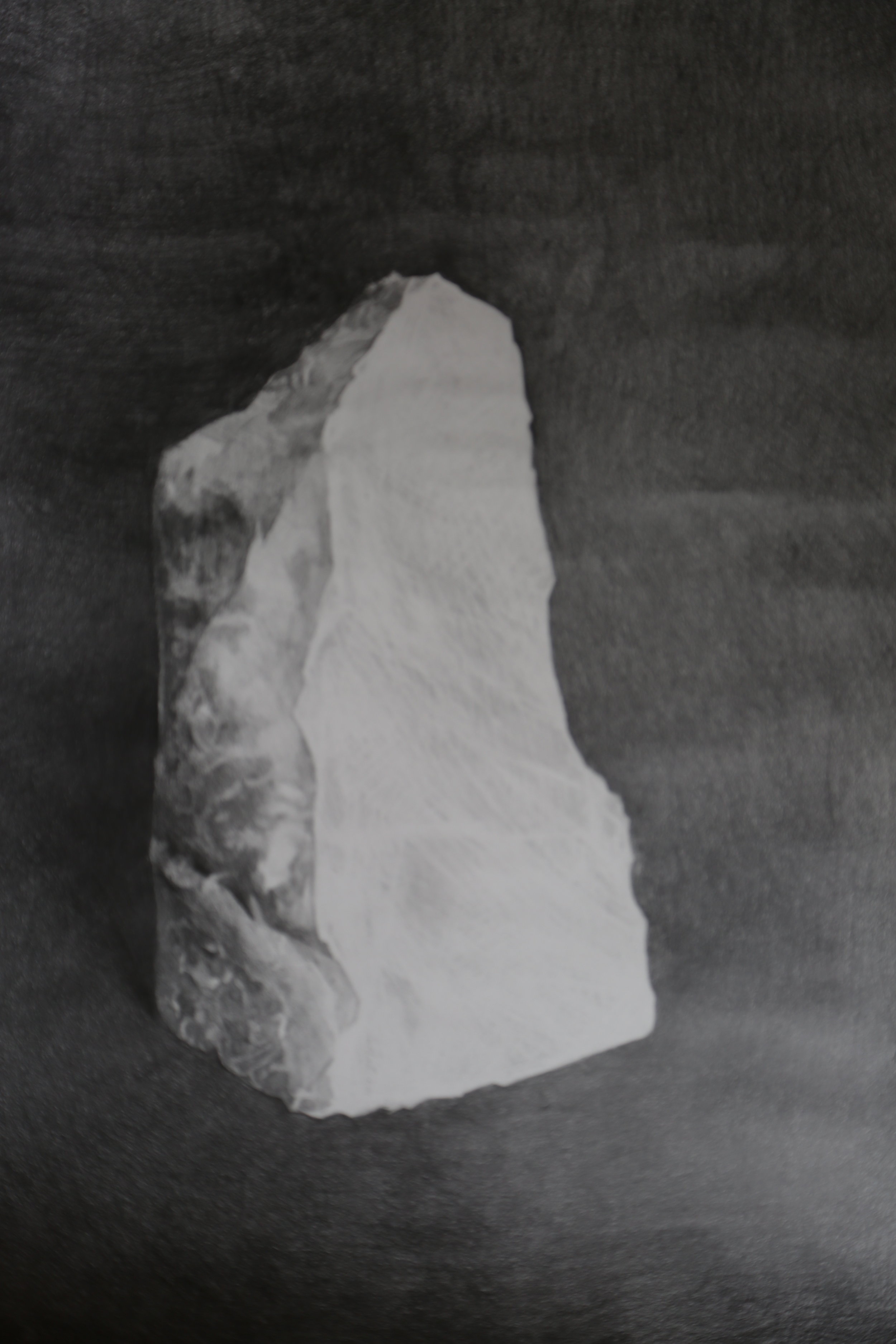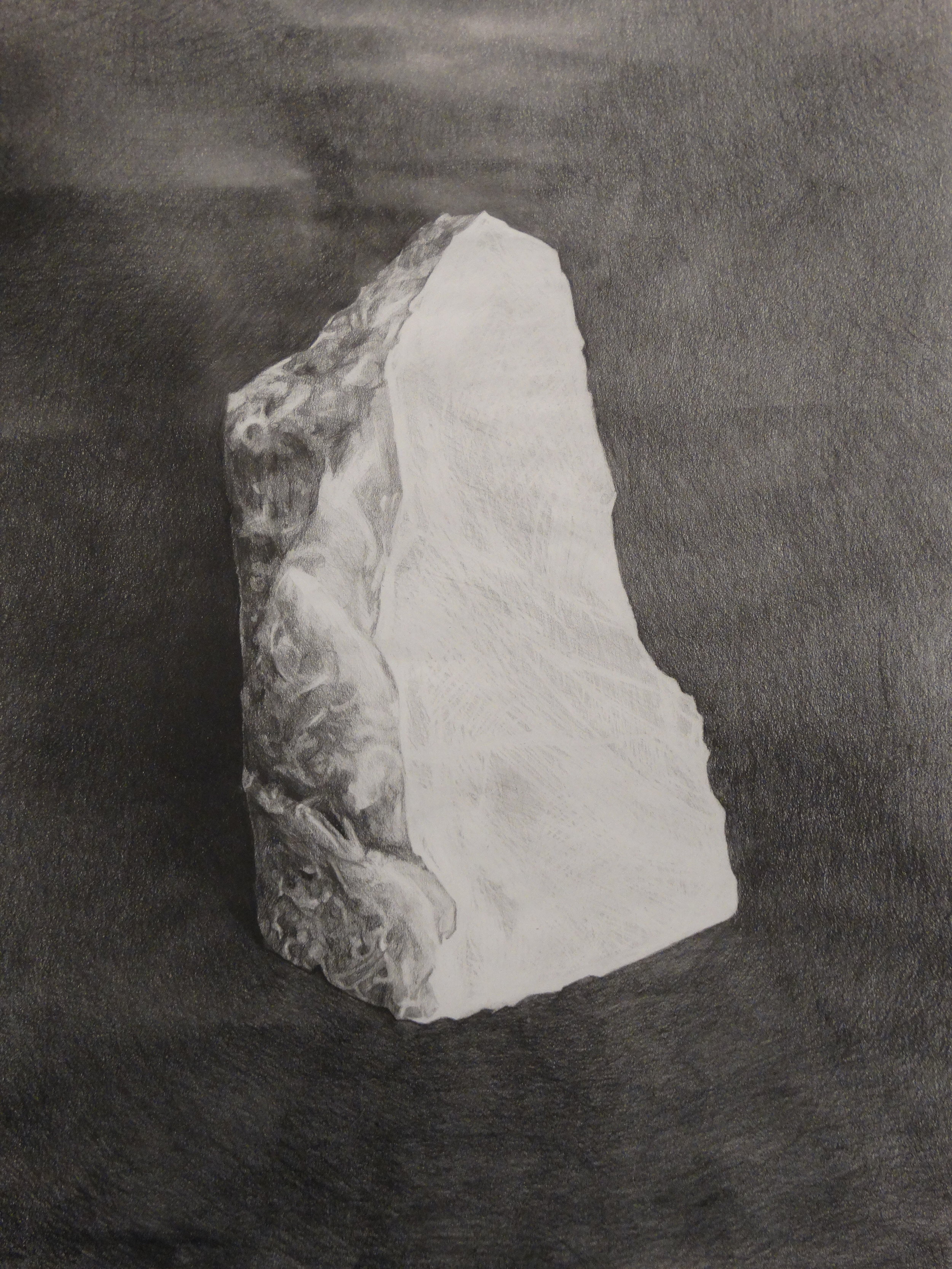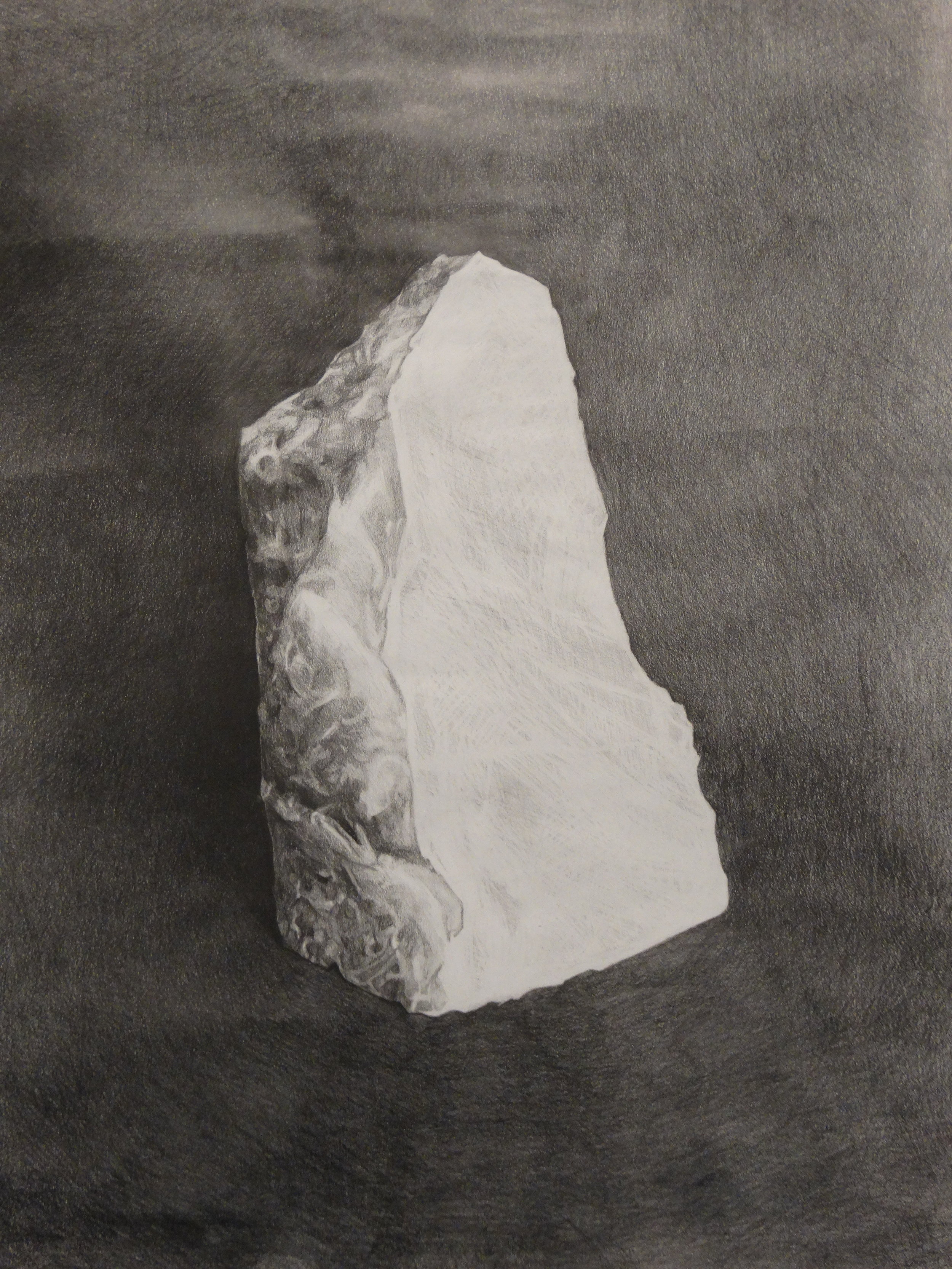T H E M A R B L E
The Marble, Athina Giannoukaki, graphite on paper, 841mm x 1189 mmRoyal Academy of Arts, Netherlands, 2018.
About the Work
———————————————————————————————————————————————————-
In the heart of the Aegean, on the island of Tinos, I stumbled upon a small fragment of marble—a shard of earth shaped by time and nature. This piece, unpolished and untouched by human hands, felt like it carried within it an intricate or an ancient story. On that moment it became, in my hands, not just a relic of its origin but a vessel of transformation, a mirror to my confusing, yet reflecting thoughts: where does my artistic essence stands?
Complicated, deep and self-reflecting question, my mind immediately run to the properties of the material. Marble, in its essence, is pure. Its veins, intricate and unpredictable, reflect the complex simplicity of nature. To work with such a material is to engage with something that transcends time, a sustainable reminder of the earth’s capacity to endure and regenerate. In its clean, untainted state, this marble fragment embodies the kind of purity that is increasingly rare in our world. To collect it is to participate in a quiet, almost sacred exchange—to take something offered by nature and return to it a new meaning.
The act of collecting, of selecting and preserving, is as much an act of creation as drawing or sculpting. This fragment, transformed through my hands and my vision, becomes more than stone; it becomes a self-portrait. It speaks of my efforts to sustain myself, to find clarity and purpose in a world that often feels fractured. The marble’s transformation—through photography, drawing, or any creative manipulation—parallels my own mental and emotional process. I do not see it as creating art, but making a big drawing becomes a self-reflection on the thoughts of struggle, survival, and artistic identity. Each line and contour of the stone reflects a thought, a struggle, a resolution.
Sustainability, then, is not merely about materials or ecological responsibility. It is about preserving the purity of thought, the authenticity of one’s creative identity. The marble fragment becomes a metaphor for this: something small and overlooked, reimagined into significance. It is a practice of mindfulness, of seeing value in simplicity and honoring it with intention. As I exhibit this drawing, it stands as more than an artistic expression. It is a dialogue between the natural and the personal, a meditation on how we sustain ourselves through the art we make. This small piece of marble, collected on a Greek island, reminds me that to create is to sustain—to take what is given, cherish it, and transform it into something enduring, something true. In other words, it is a self-portrait.
